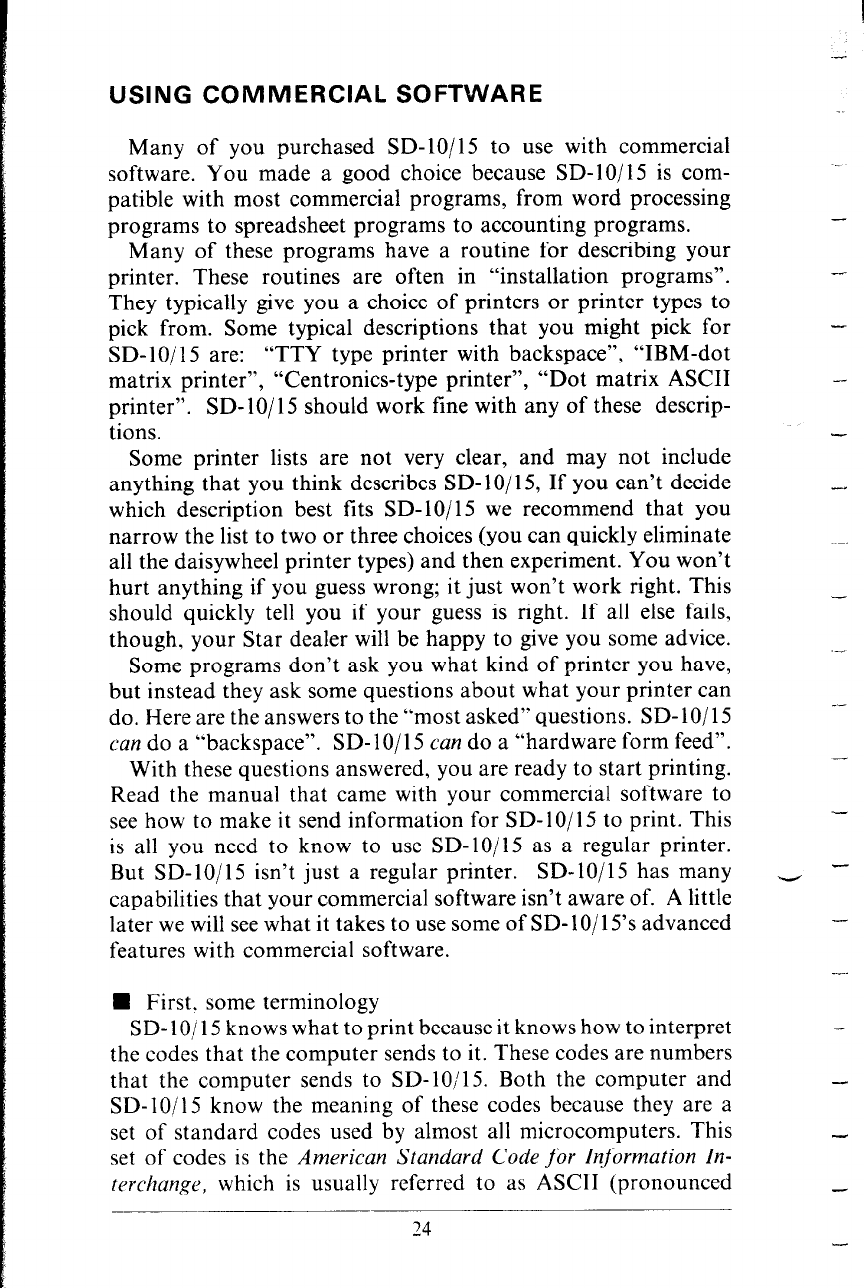
USING COMMERCIAL SOFTWARE
Many of you purchased SD-lo/15 to use with commercial
software. You made a good choice because SD- lo/ 15 is com-
patible with most commercial programs, from word processing
programs to spreadsheet programs to accounting programs.
Many of these programs have a routine for describing your
printer. These routines are often in “installation programs”.
They typically give you a choice of printers or printer types to
pick from. Some typical descriptions that you might pick for
SD-lo/l5 are:
“TTY type printer with backspace”, “IBM-dot
matrix printer”,
“Centronics-type printer”, “Dot matrix ASCII
printer”.
SD-lo/l5 should work fine with any of these descrip-
tions.
Some printer lists are not very clear, and may not include
anything that you think describes SD-10/15, If you can’t decide
which description best fits SD-lo/l5 we recommend that you
narrow the list to two or three choices (you can quickly eliminate
all the daisywheel printer types) and then experiment. You won’t
hurt anything if you guess wrong; it just won’t work right. This
should quickly tell you if your guess is right. If all else fails,
though, your Star dealer will be happy to give you some advice.
Some programs don’t ask you what kind of printer you have,
but instead they ask some questions about what your printer can
do. Here are the answers to the “most asked” questions. SD- 10/l 5
can do a “backspace”.
SD- lo/ 15 can do a “hardware form feed”.
With these questions answered, you are ready to start printing.
Read the manual that came with your commercial software to
see how to make it send information for SD-lo/l 5 to print. This
is all you need to know to use SD-lo/l5 as a regular printer.
But SD-lo/l5 isn’t just a regular printer. SD-lo/l5 has many
capabilities that your commercial software isn’t aware of. A little
later we will see what it takes to use some of SD- IO/l 5’s advanced
features with commercial software.
w First. some terminology
SD- IO/ 15 knows what to print because it knows how to interpret
the codes that the computer sends to it. These codes are numbers
that the computer sends to SD-10/l 5. Both the computer and
SD-IO/l 5 know the meaning of these codes because they are a
set of standard codes used by almost all microcomputers. This
set of codes is the American Standard Code for hformation In-
terchange, which is usually referred to as ASCII (pronounced
--.
24
-


















